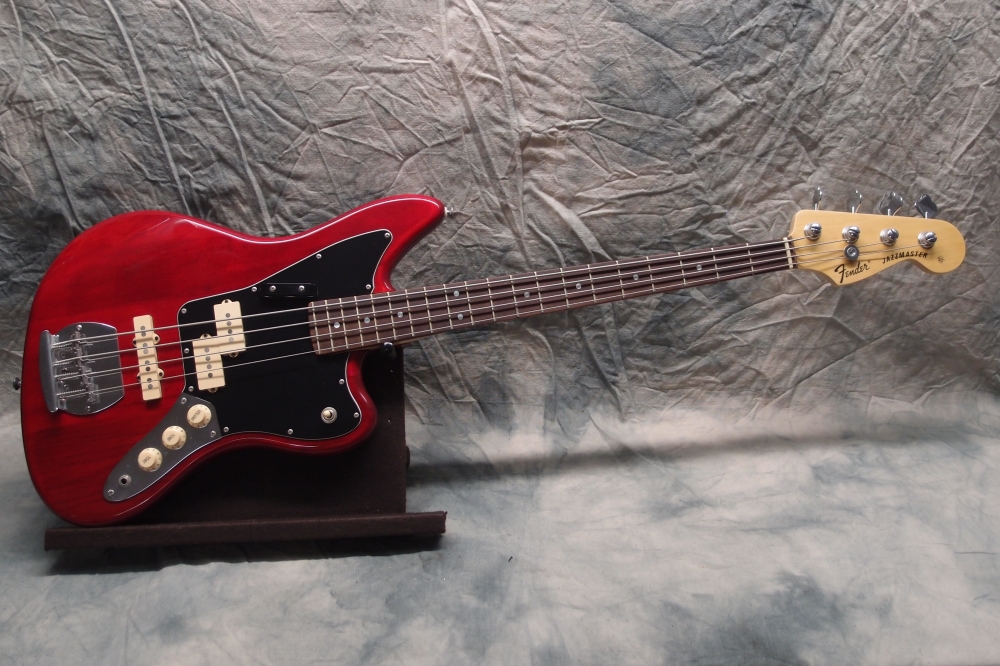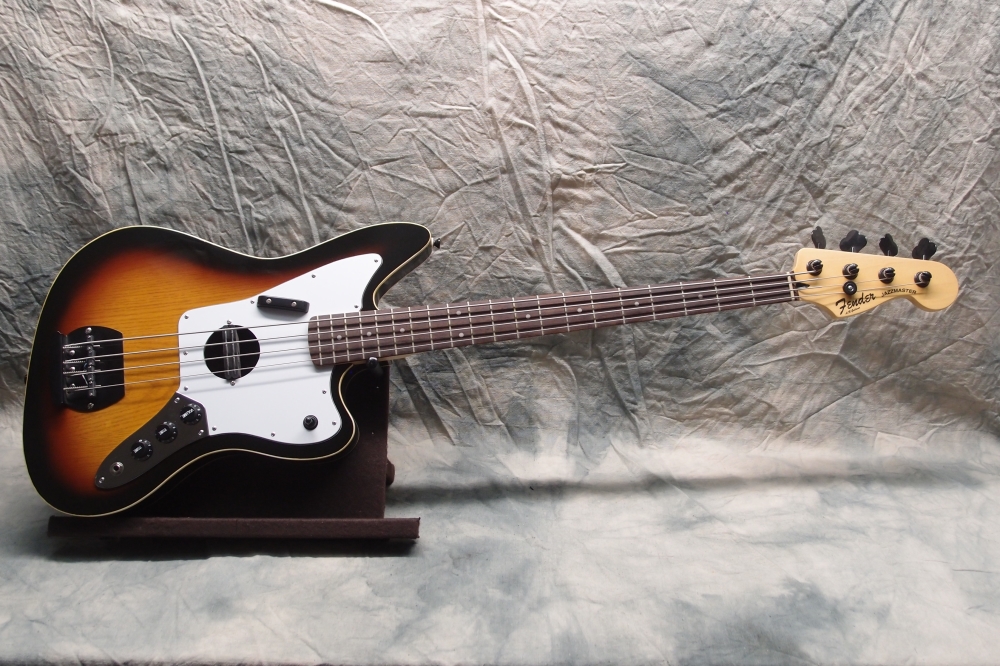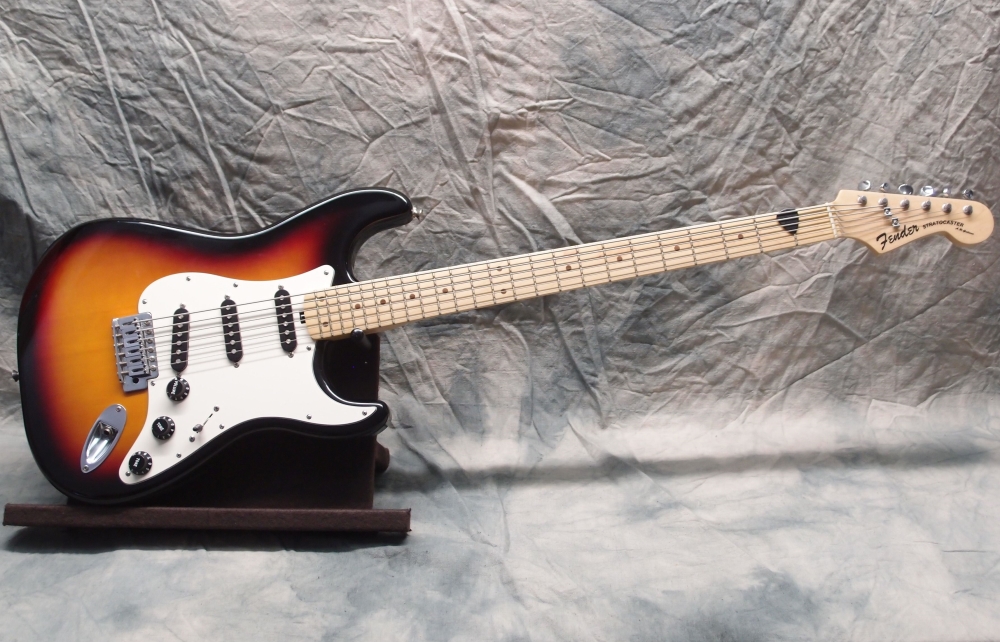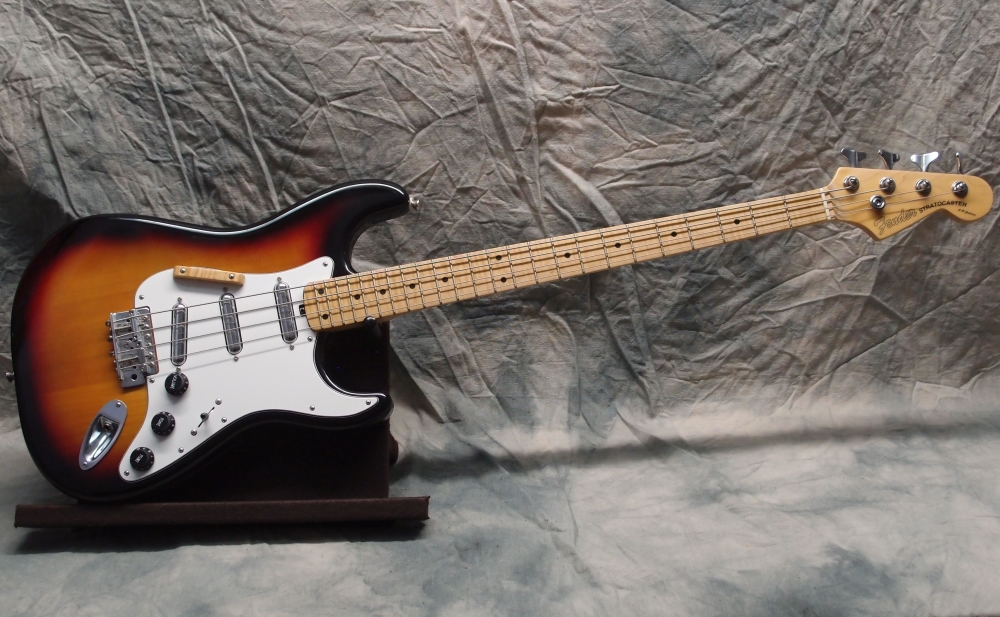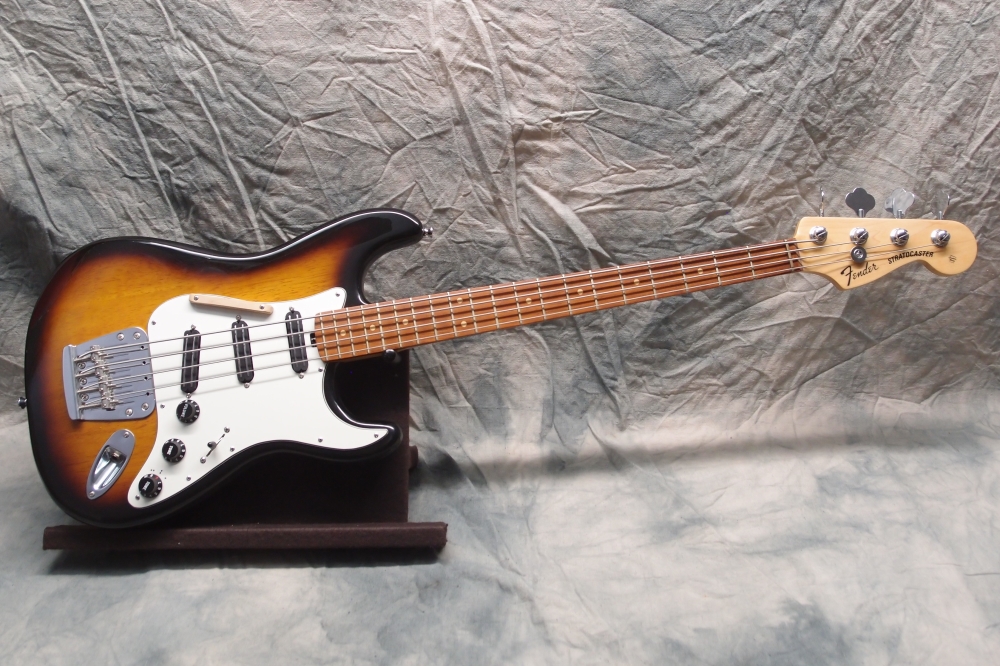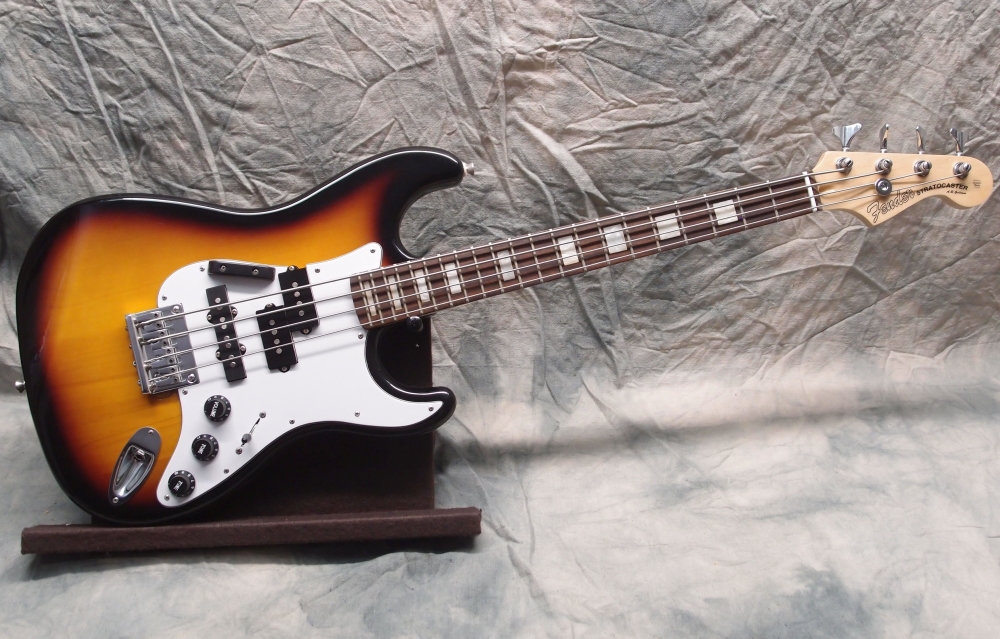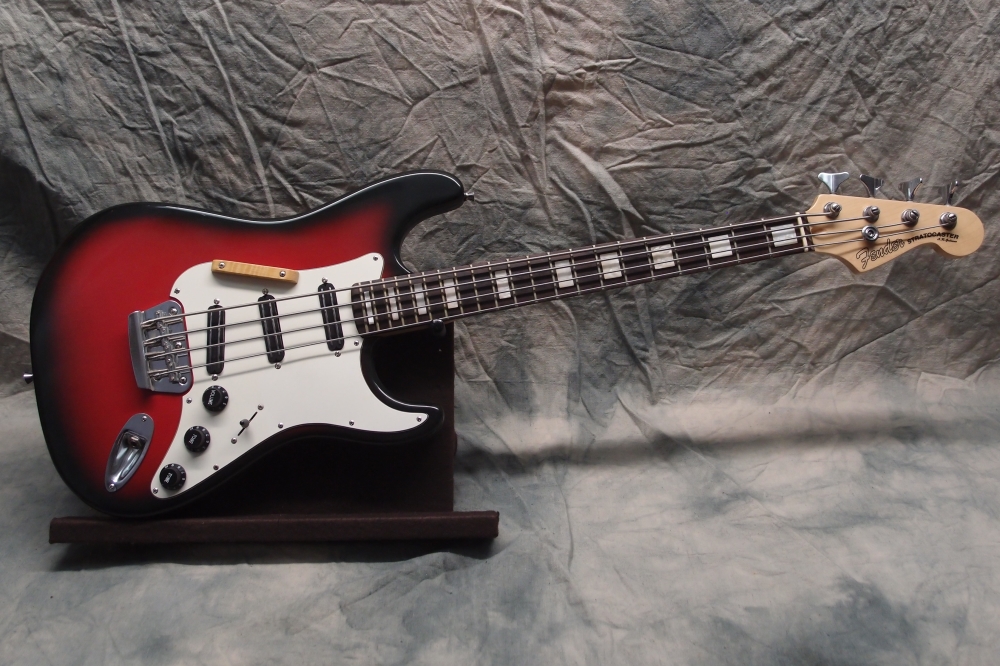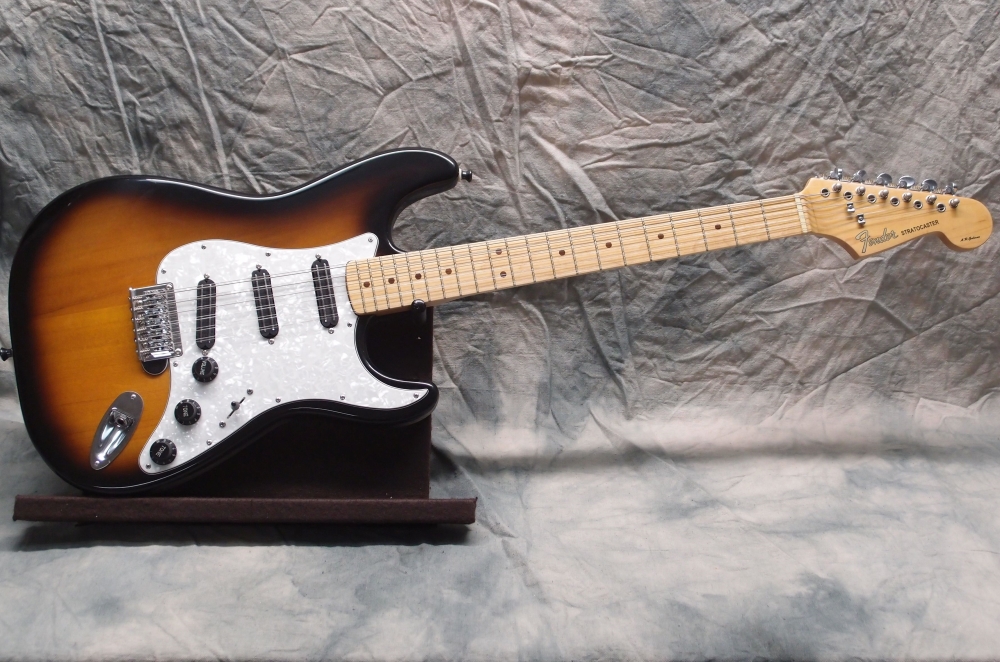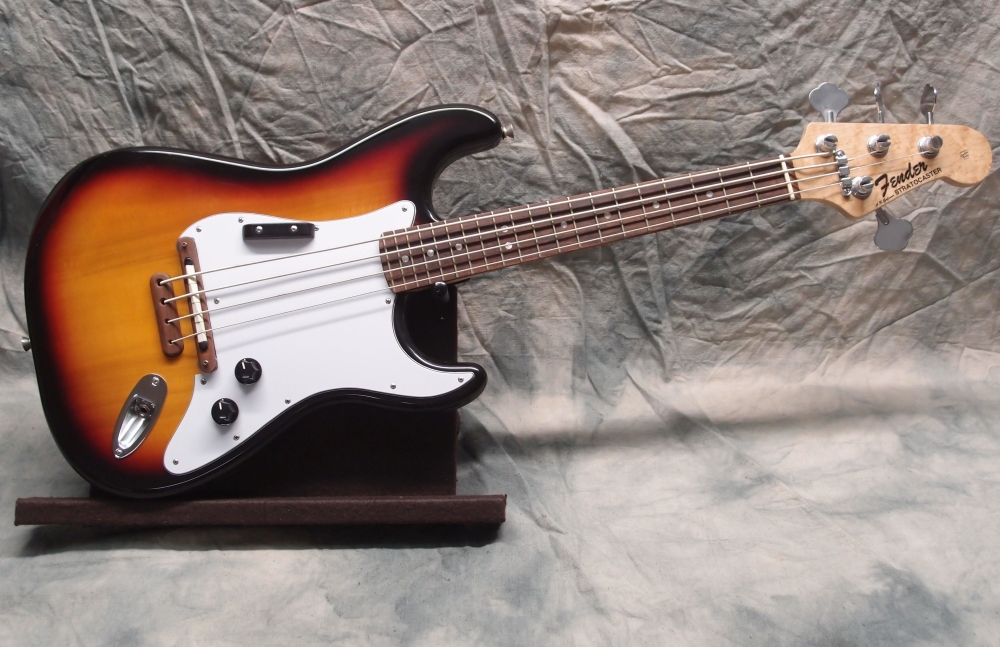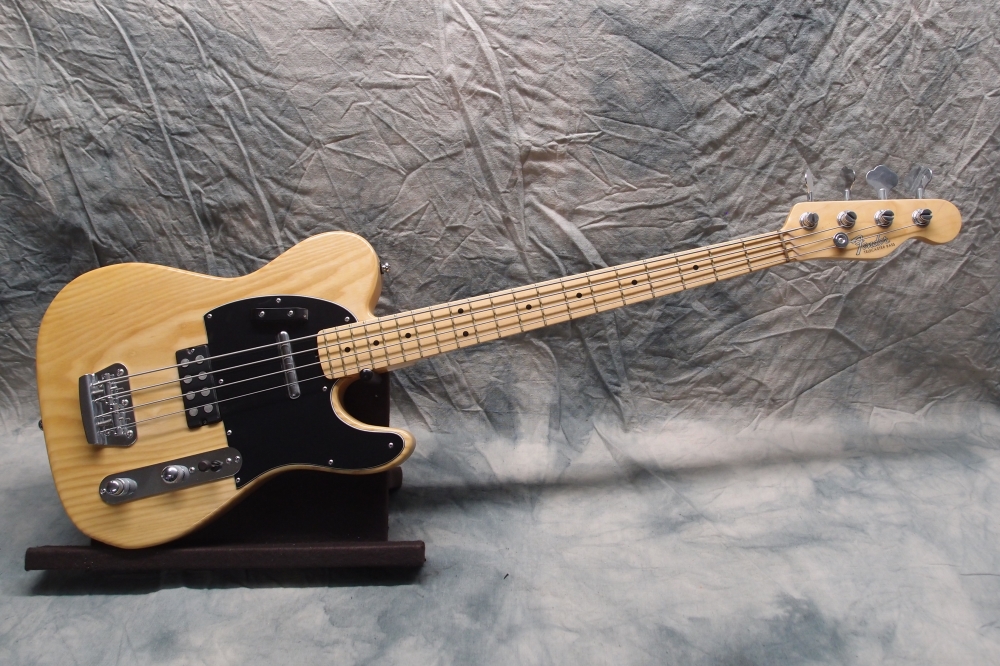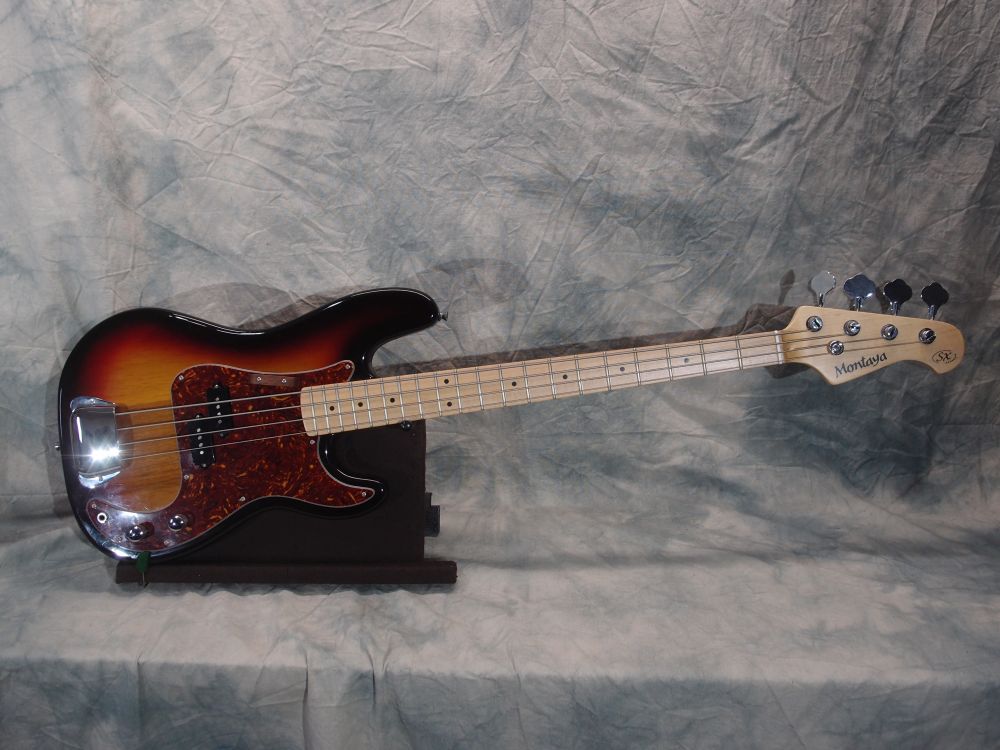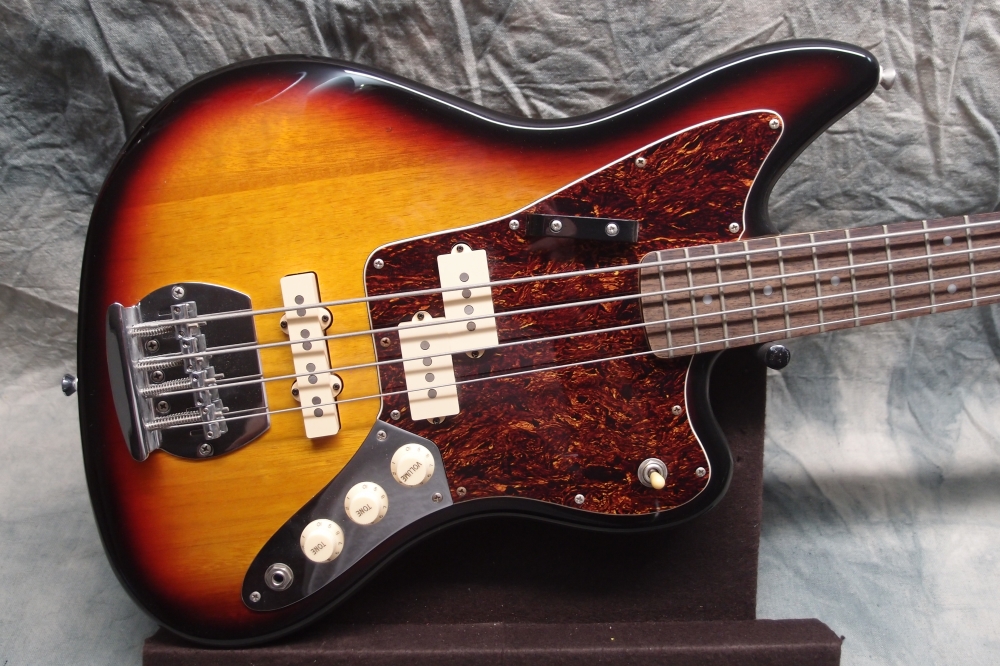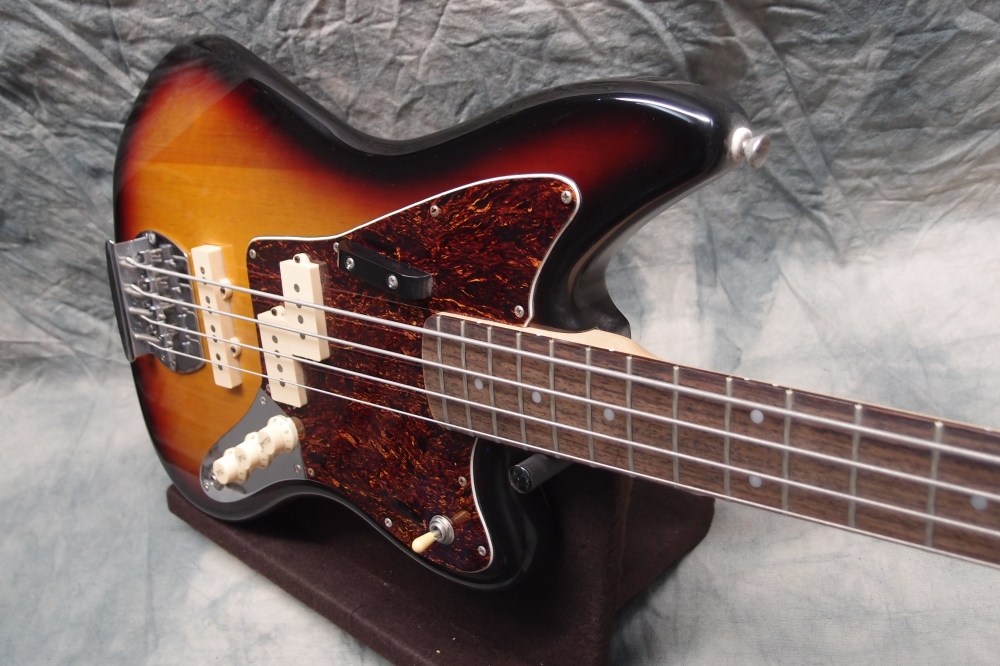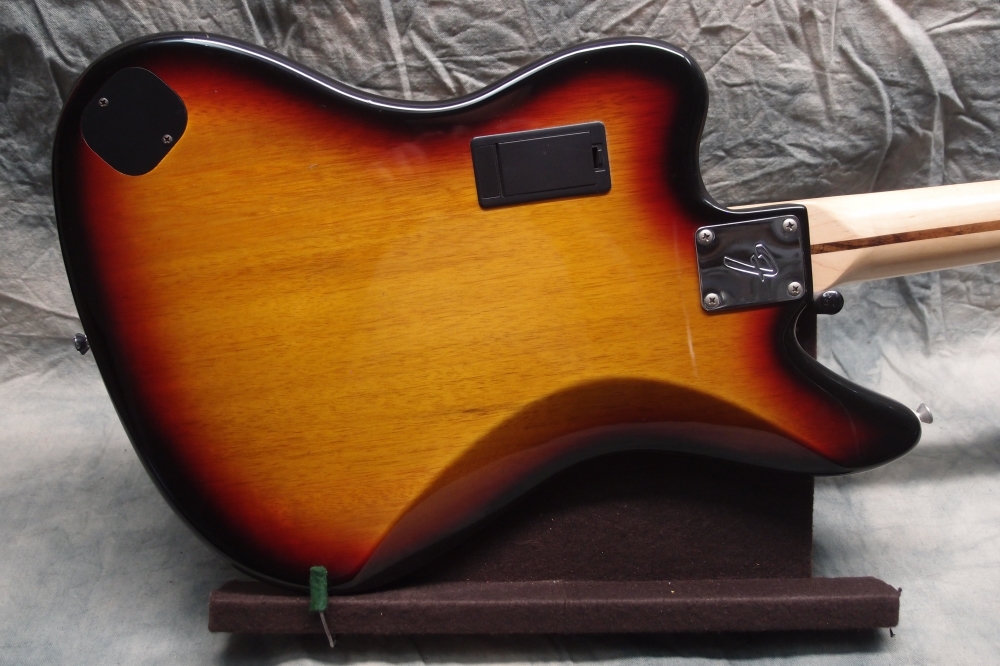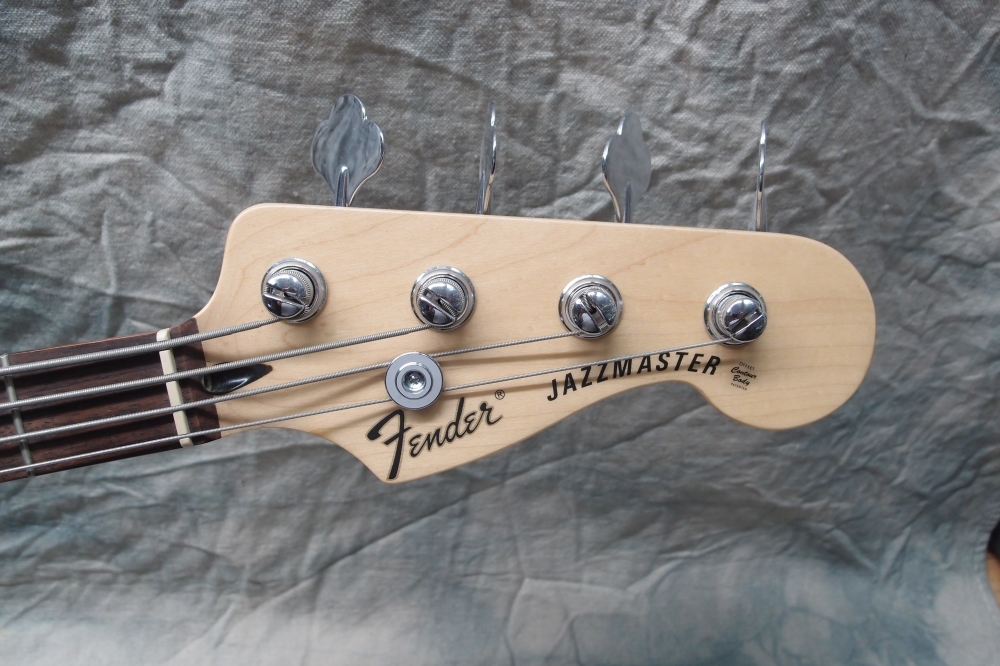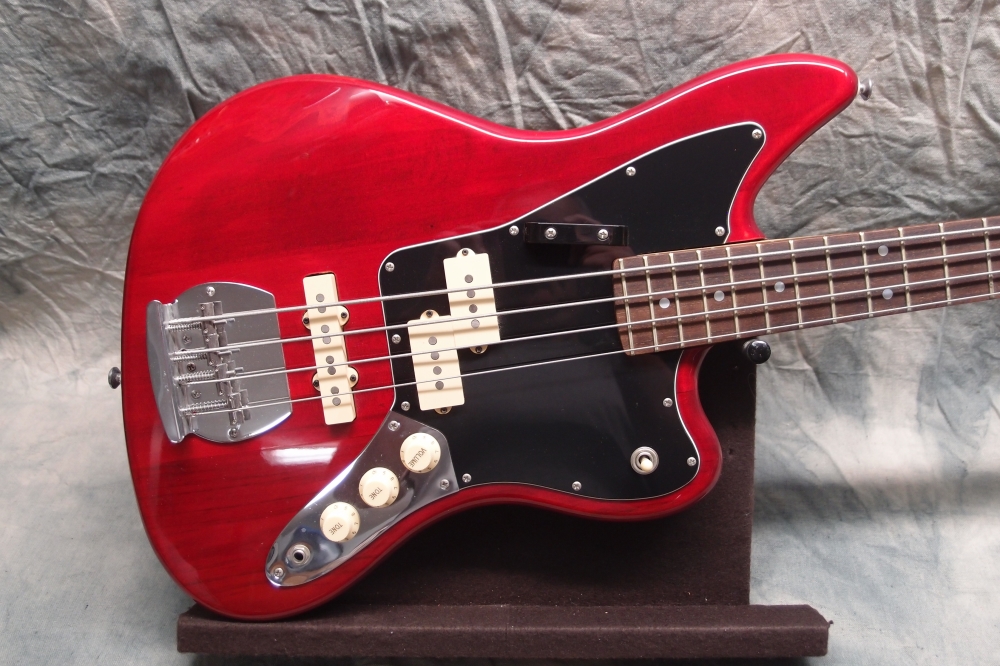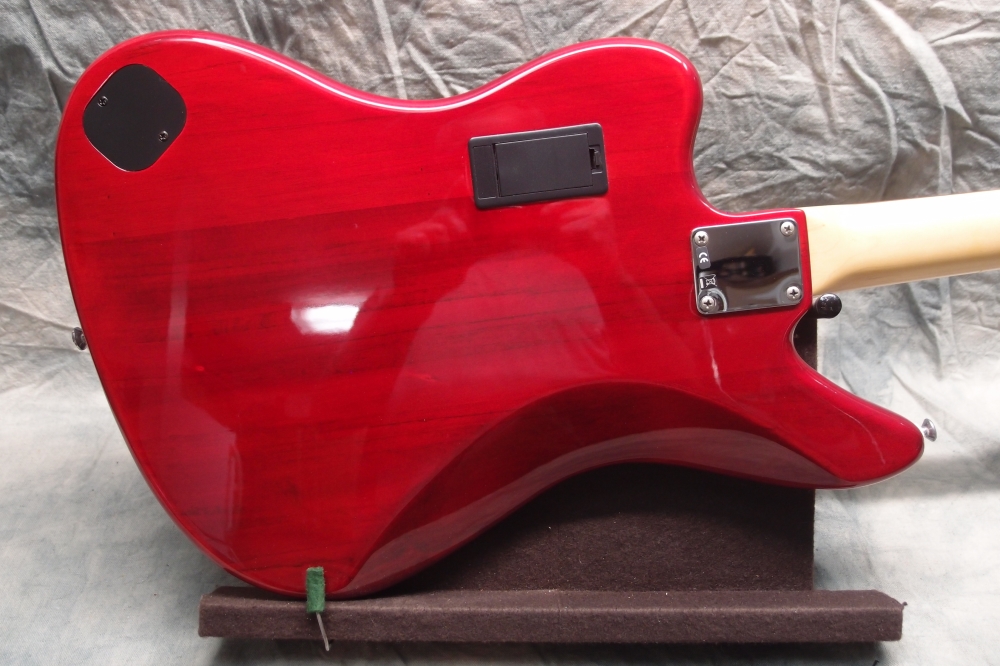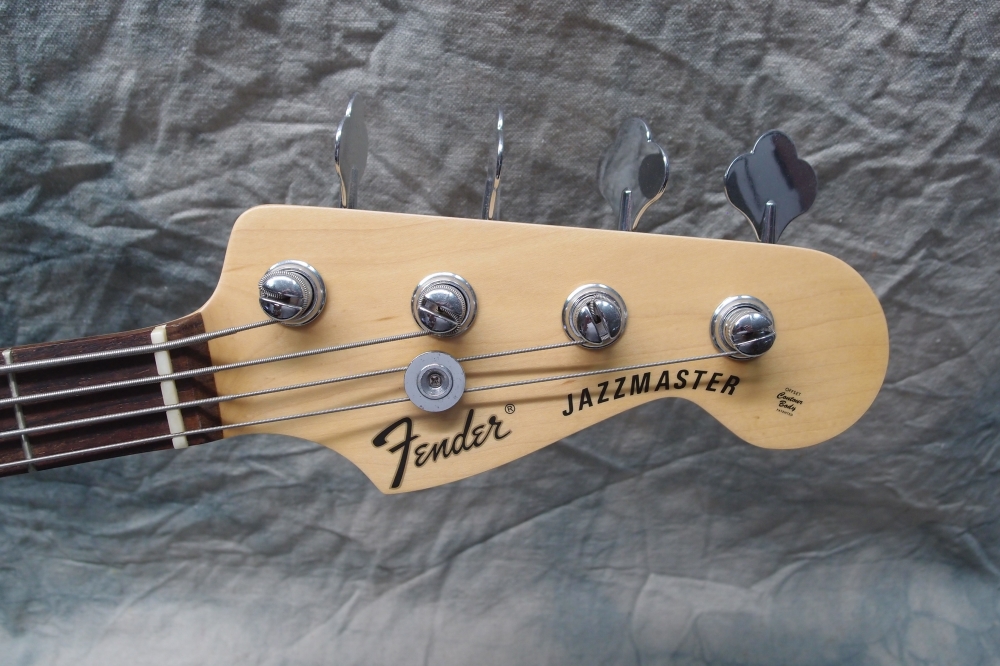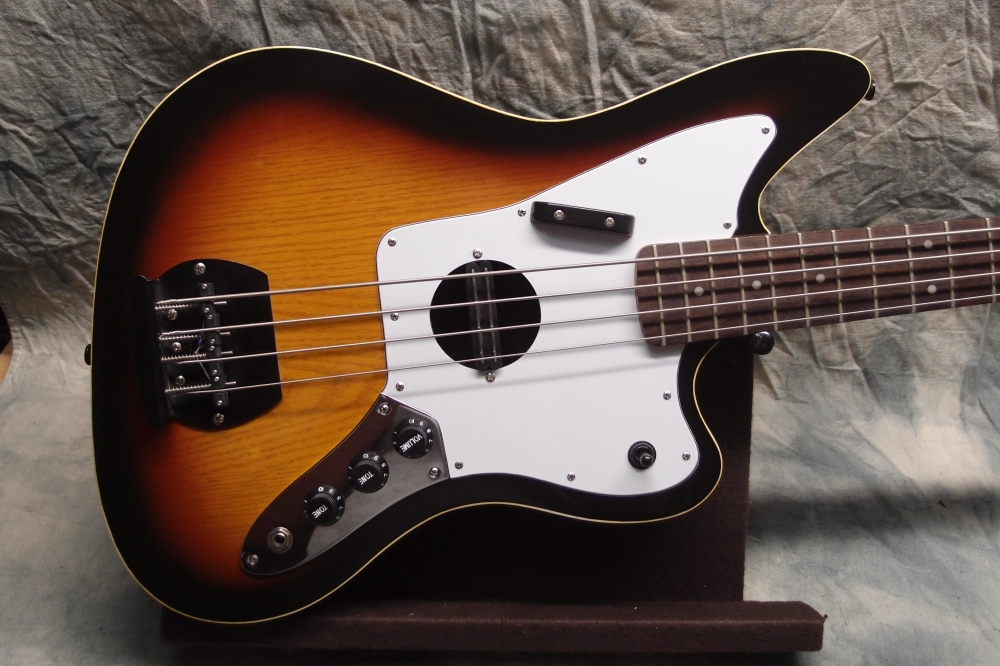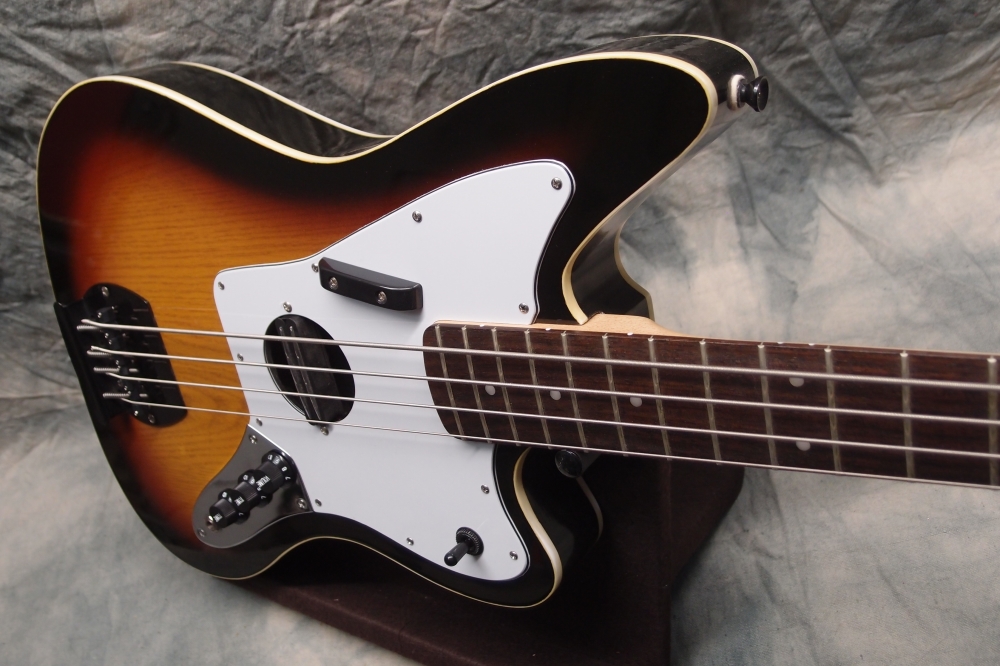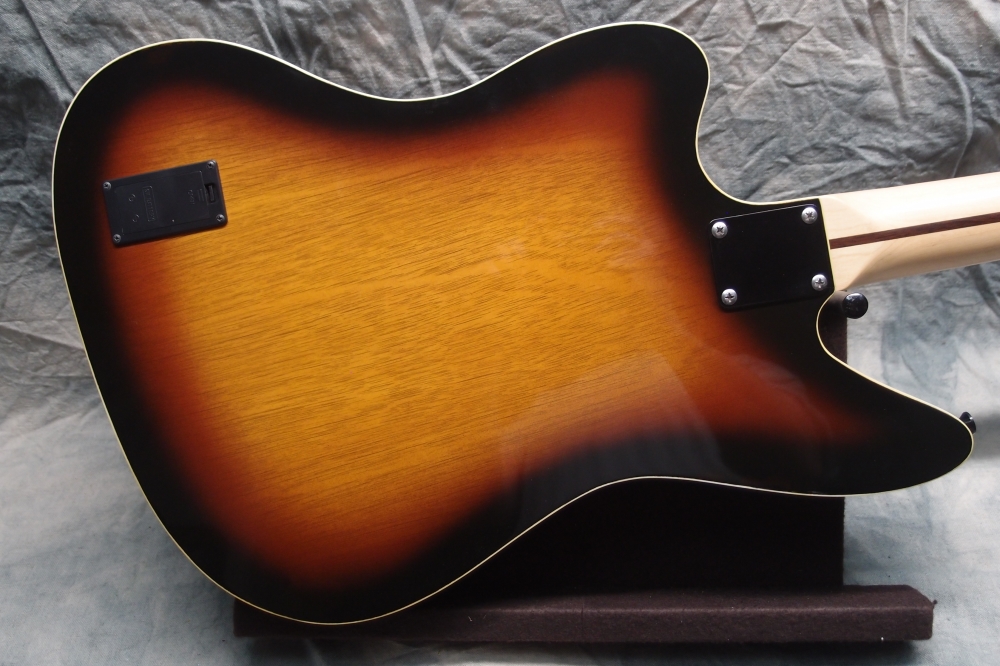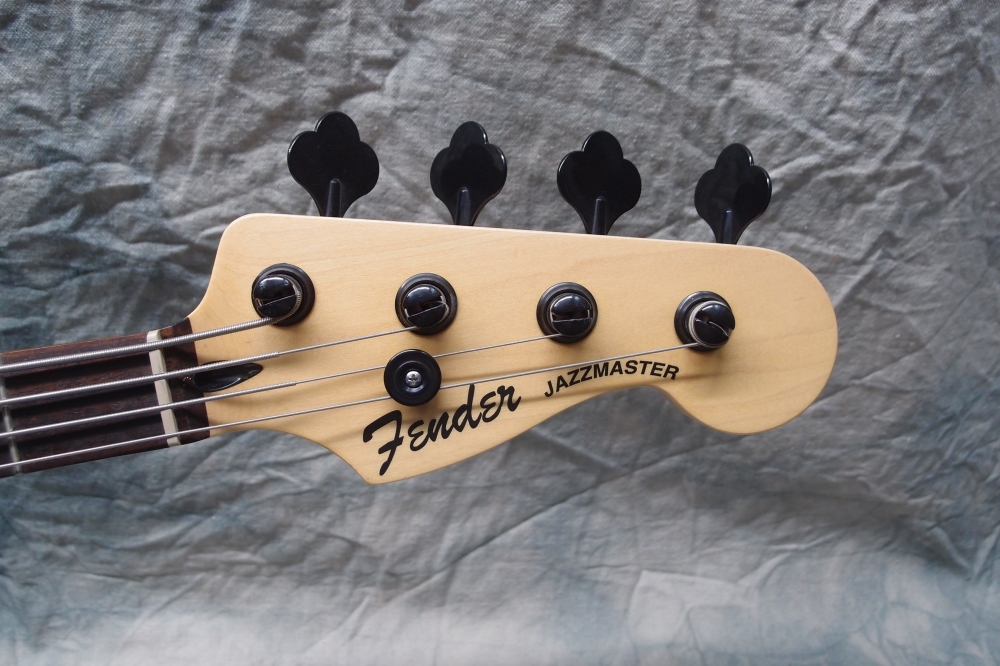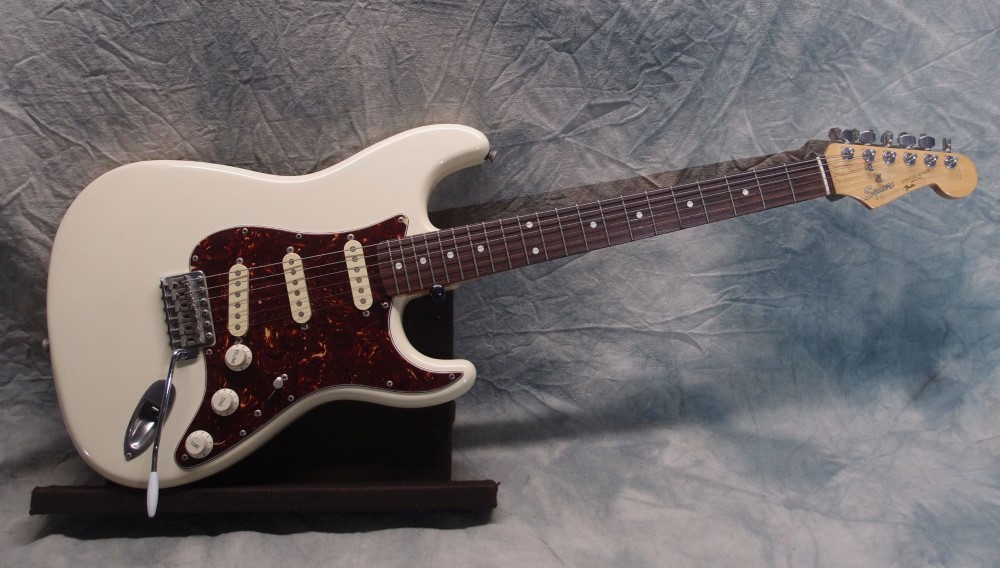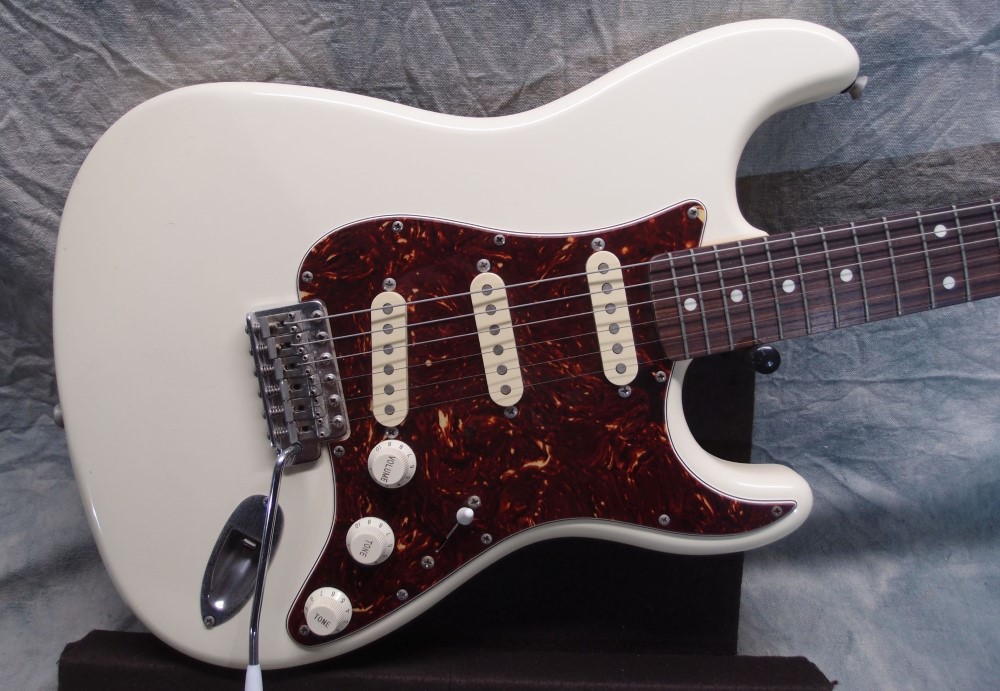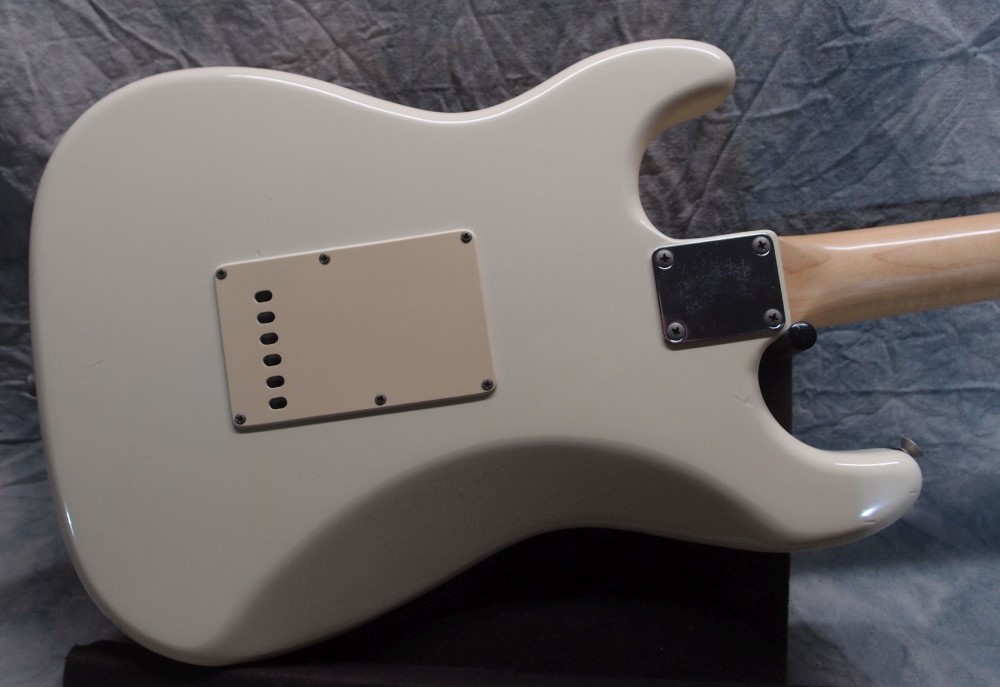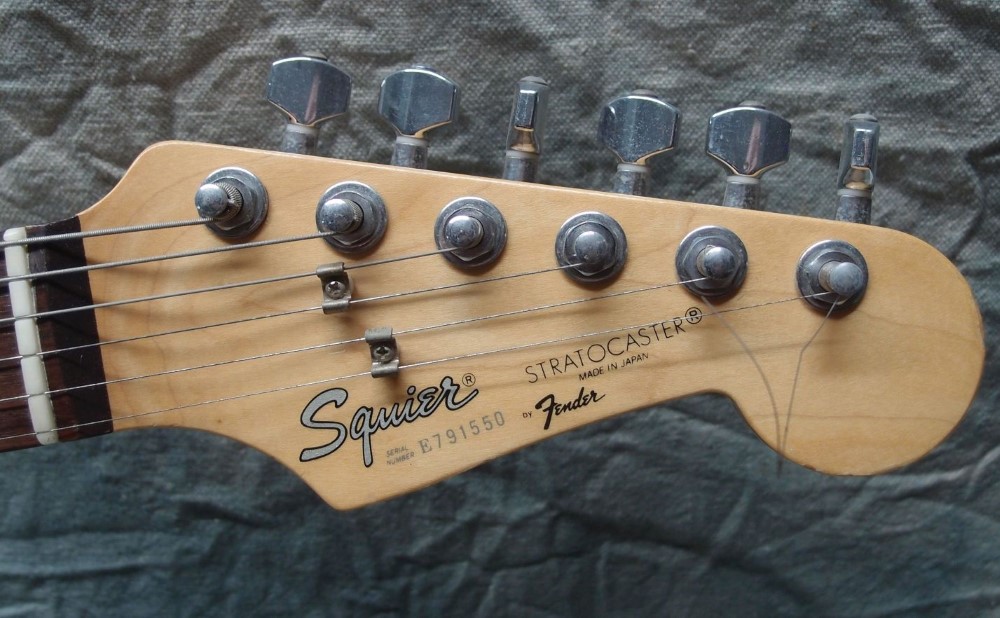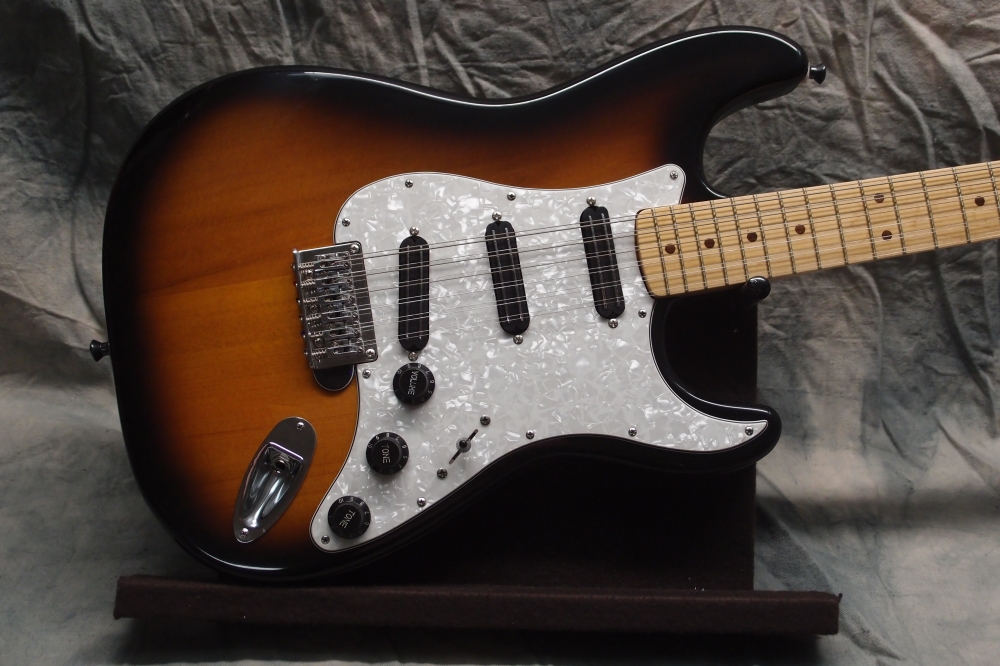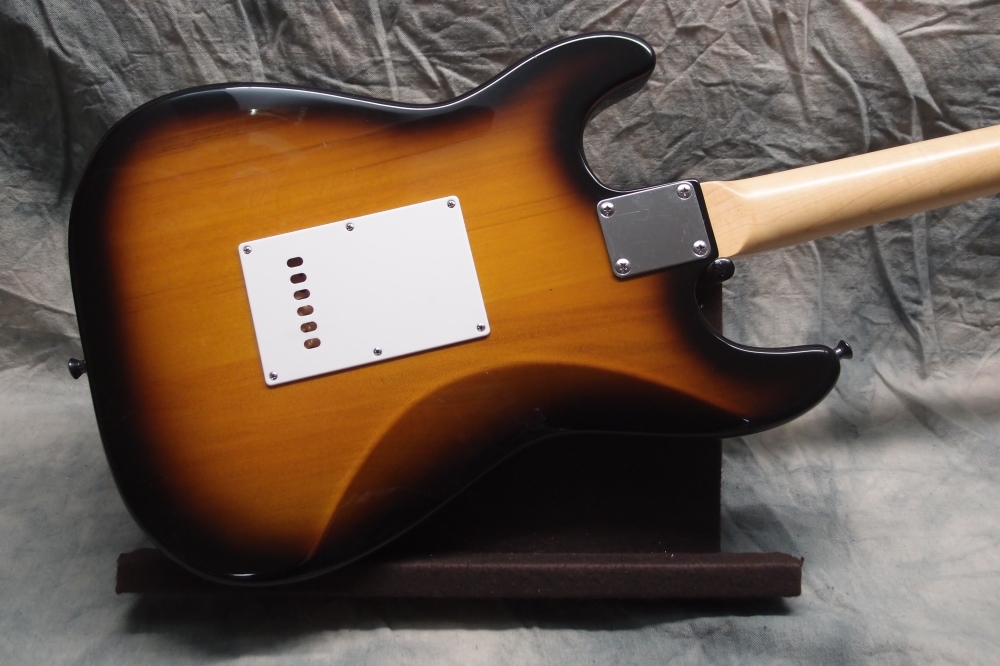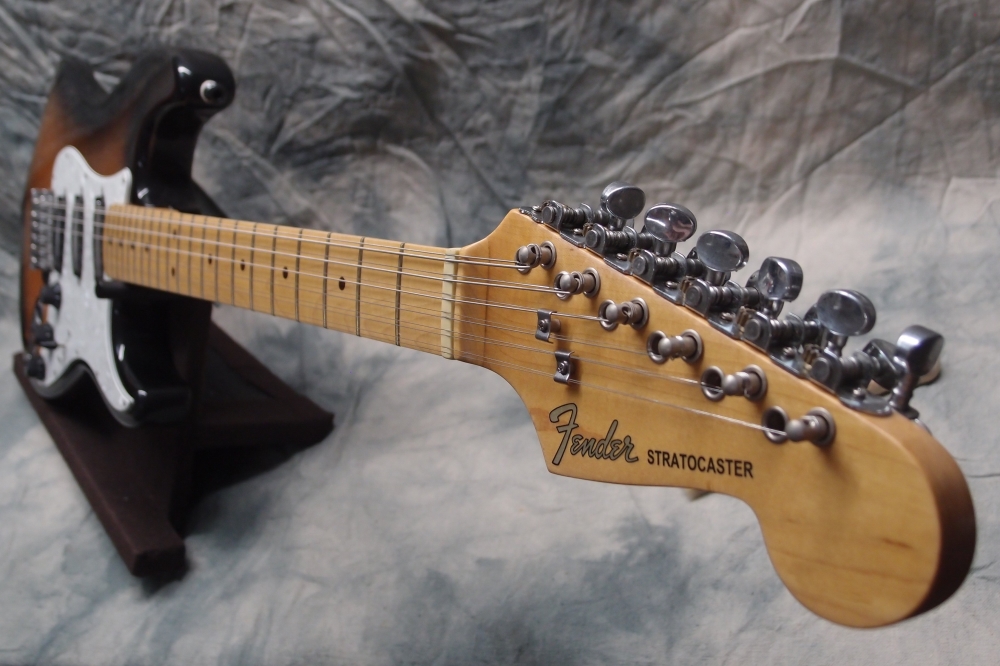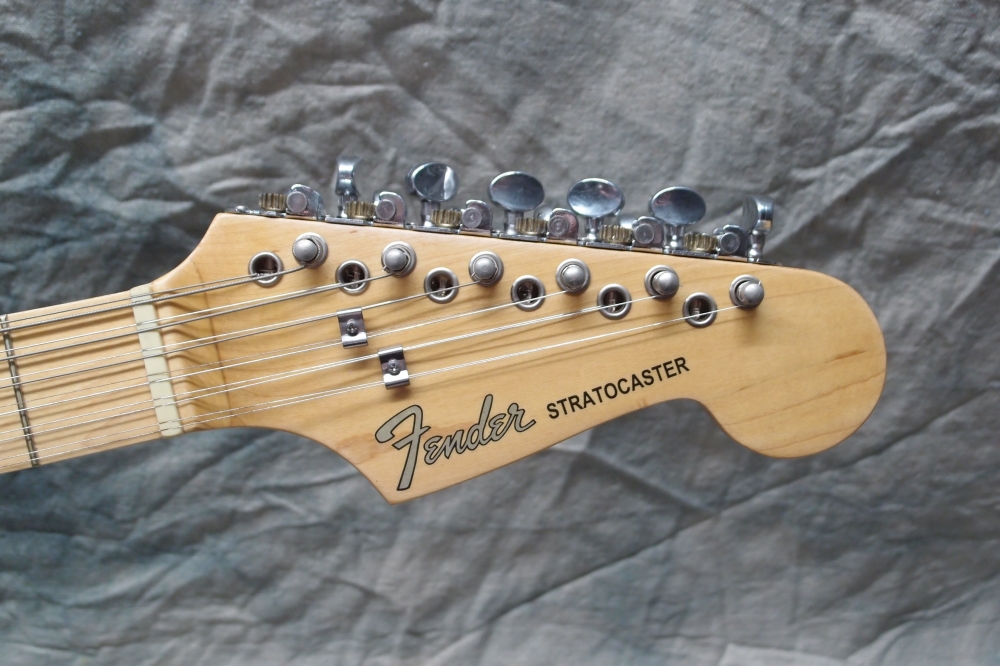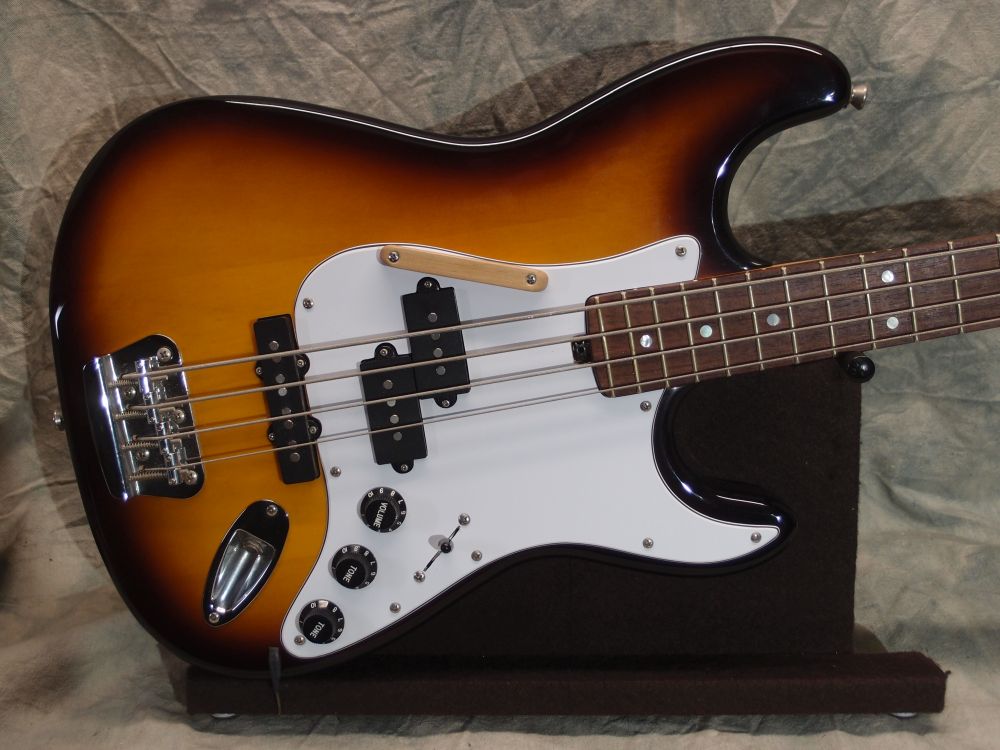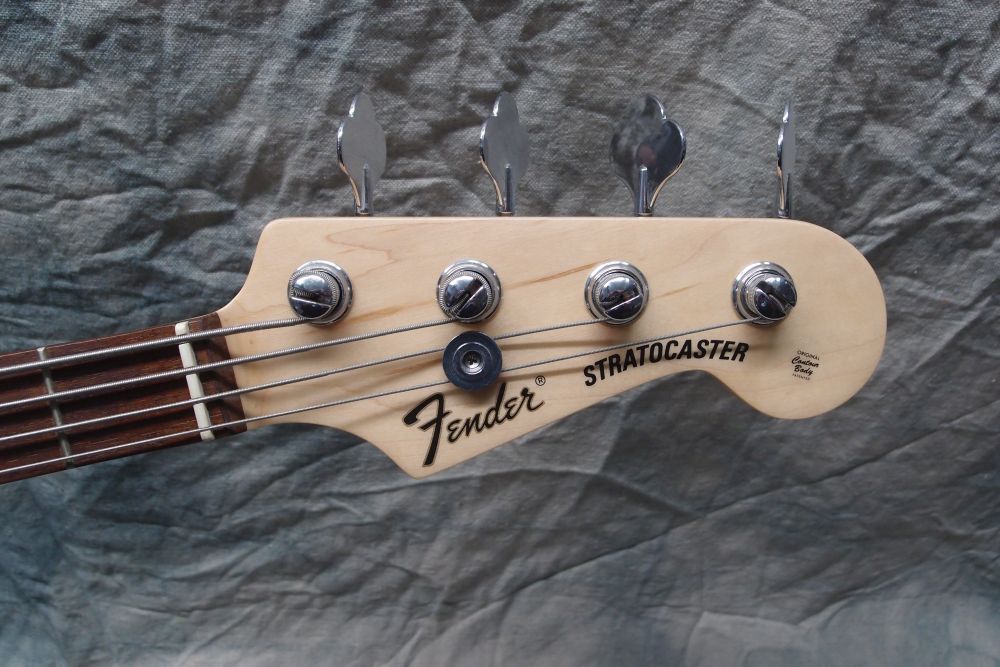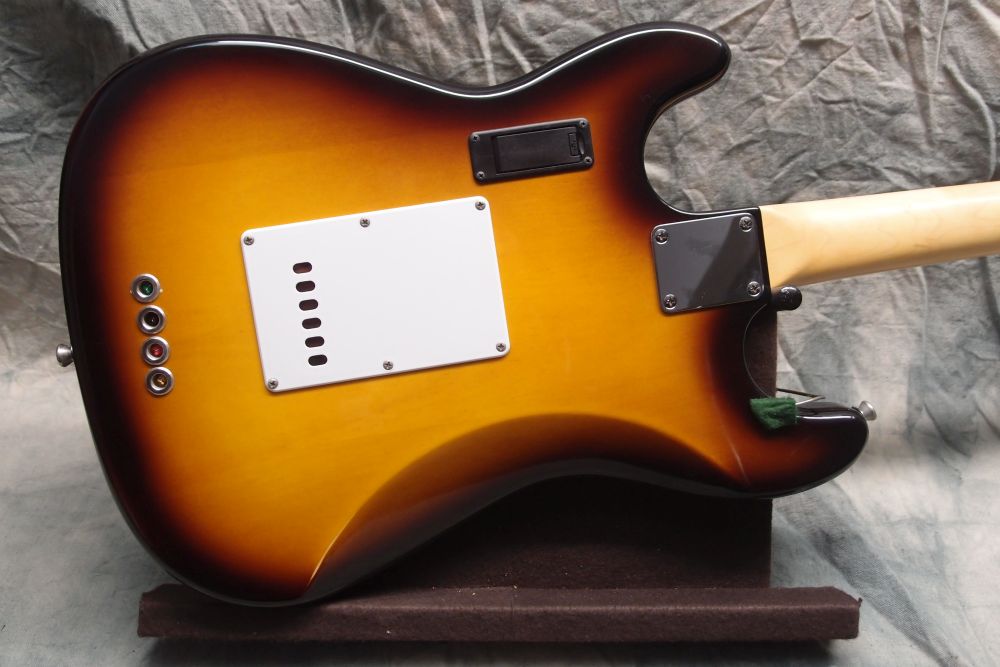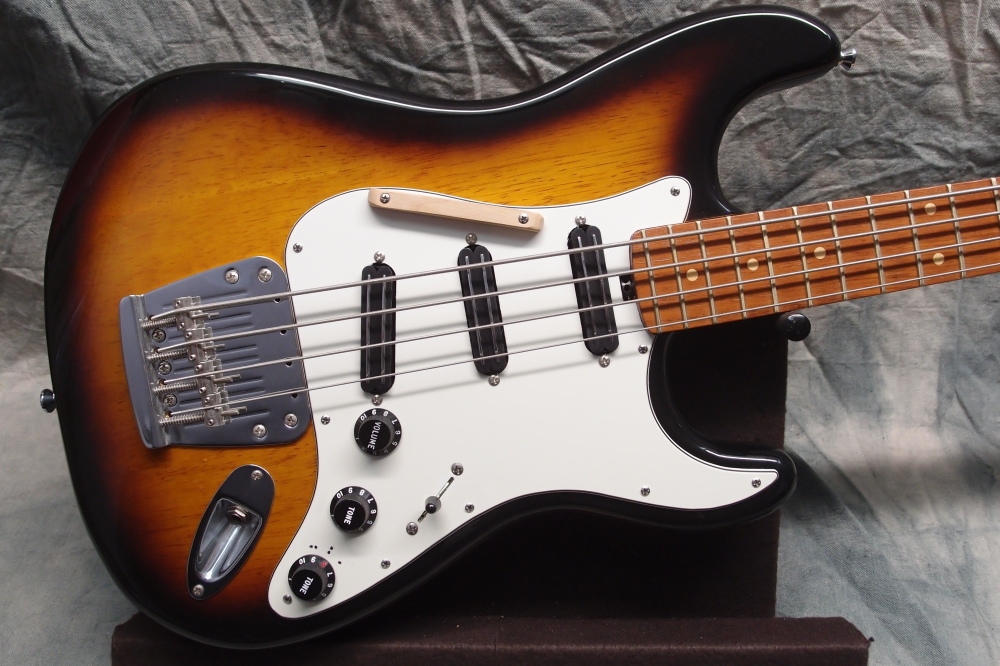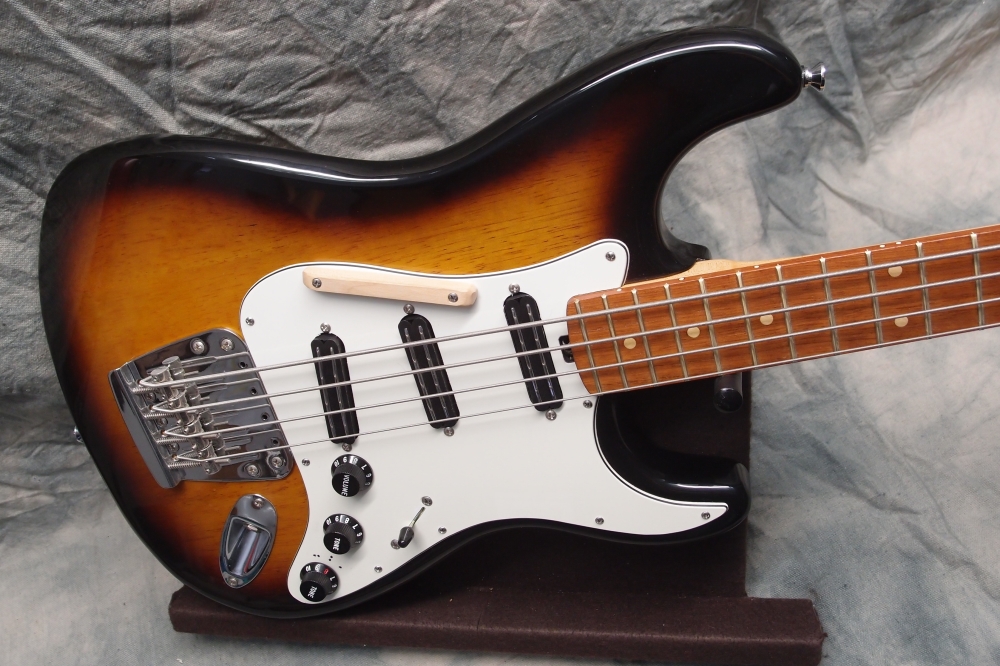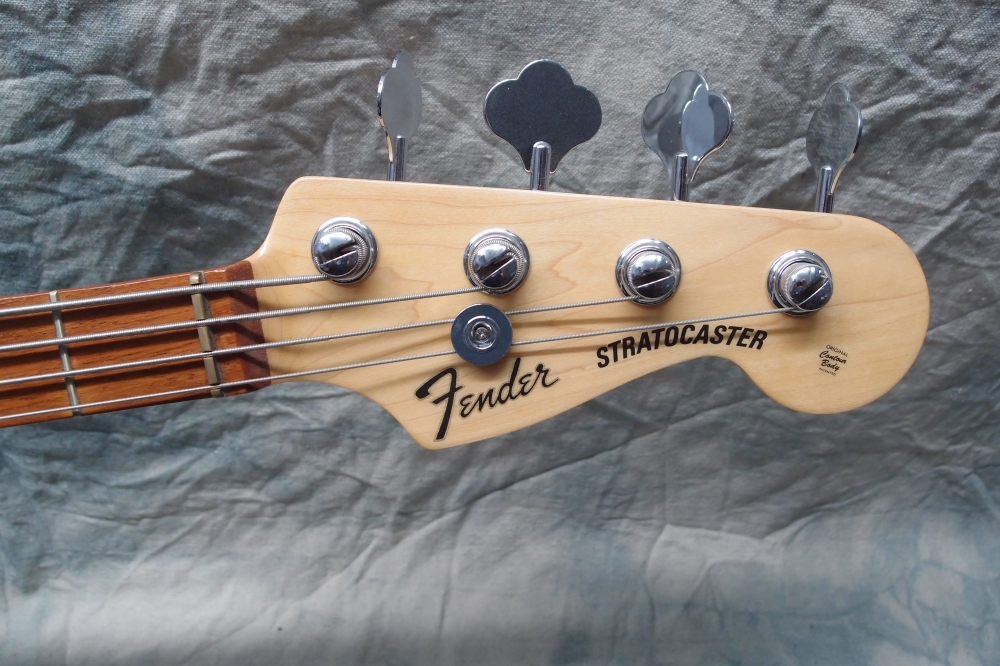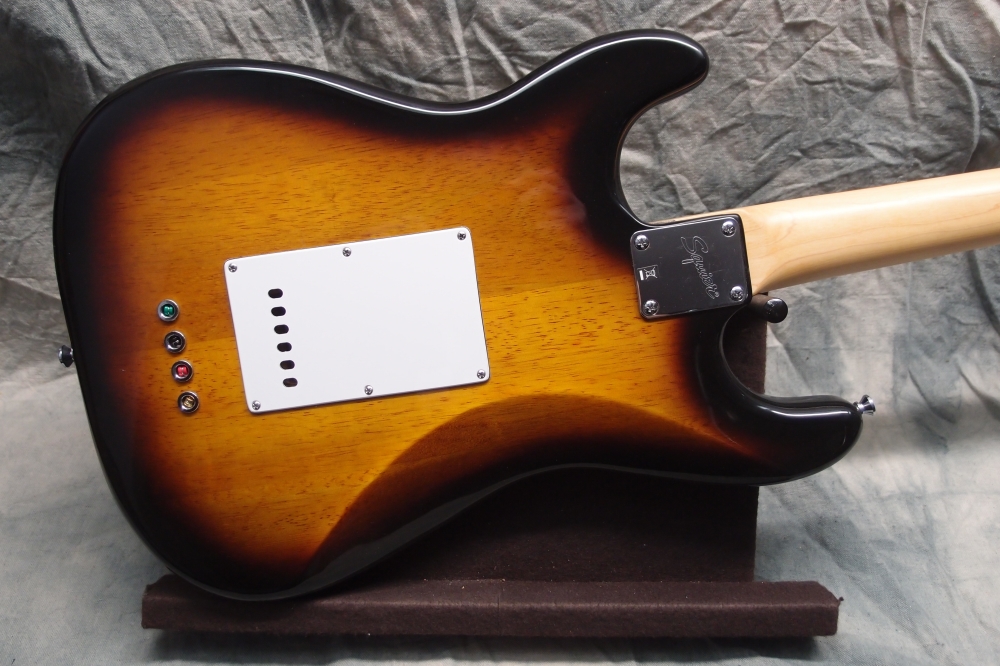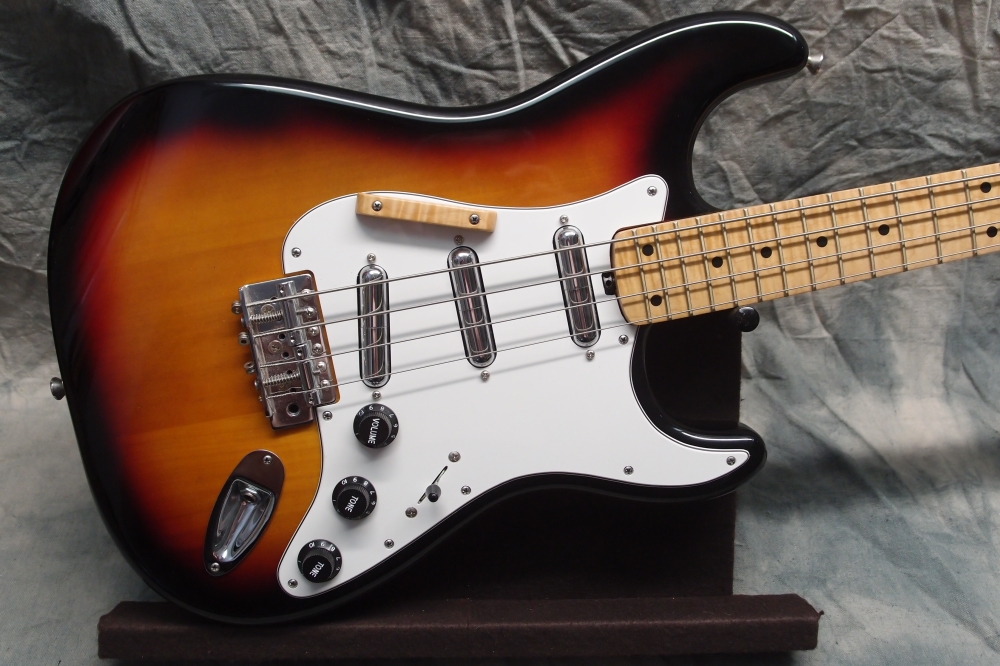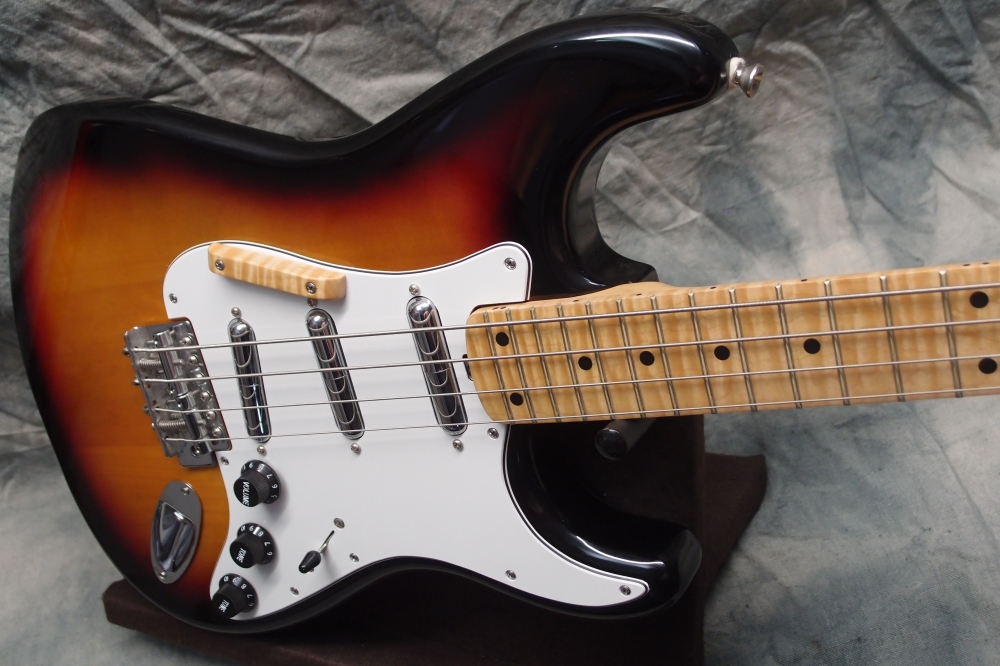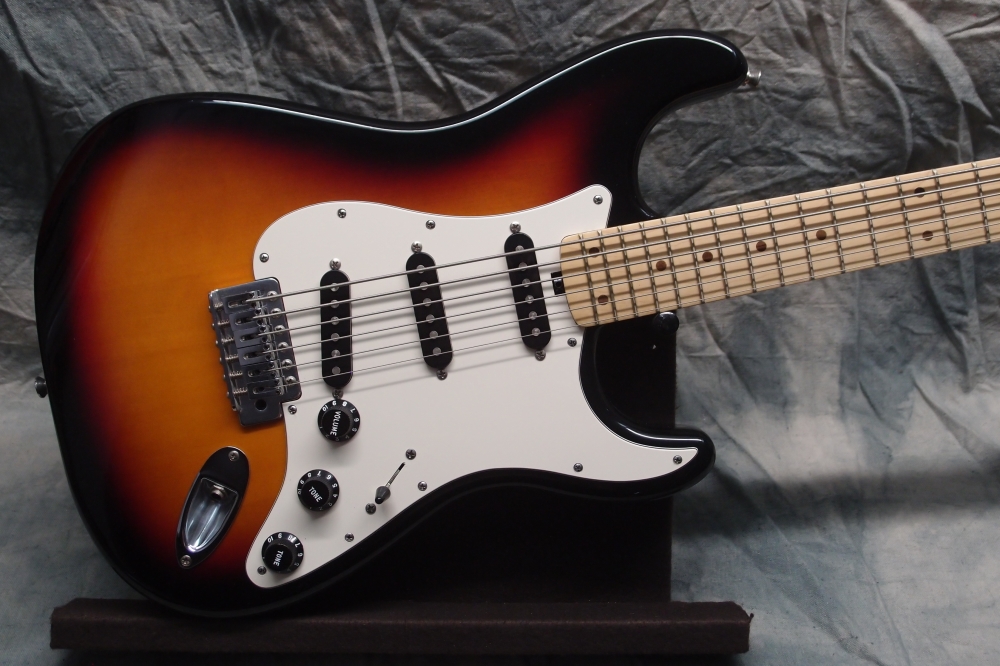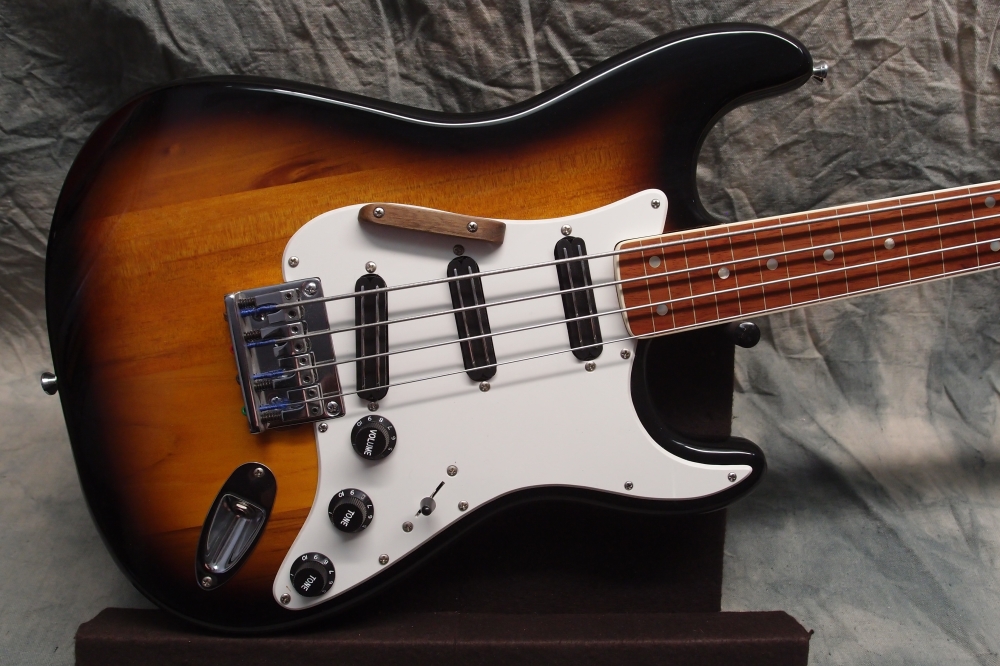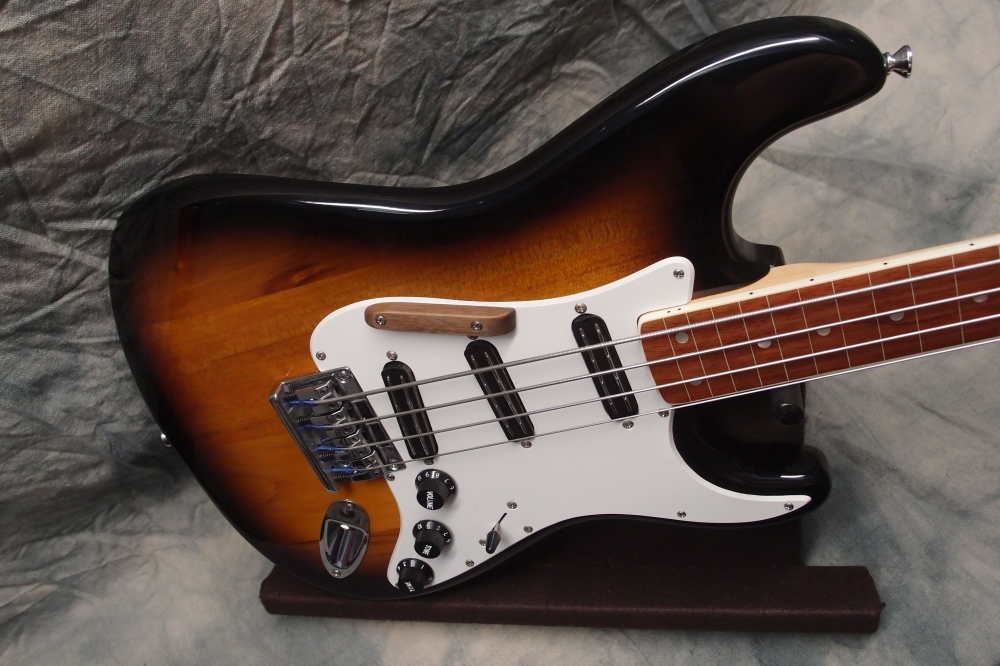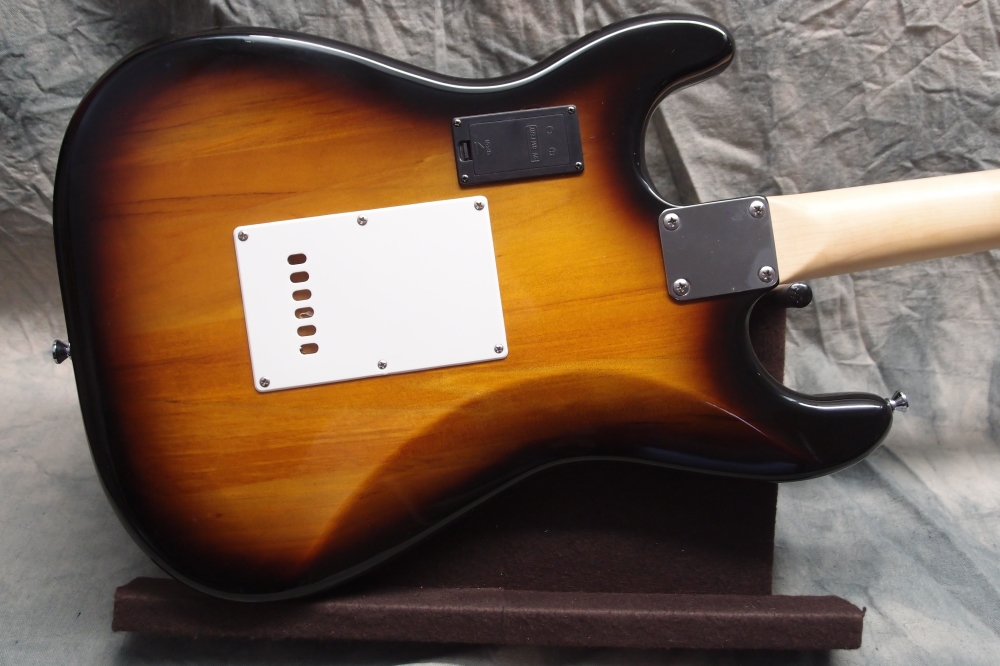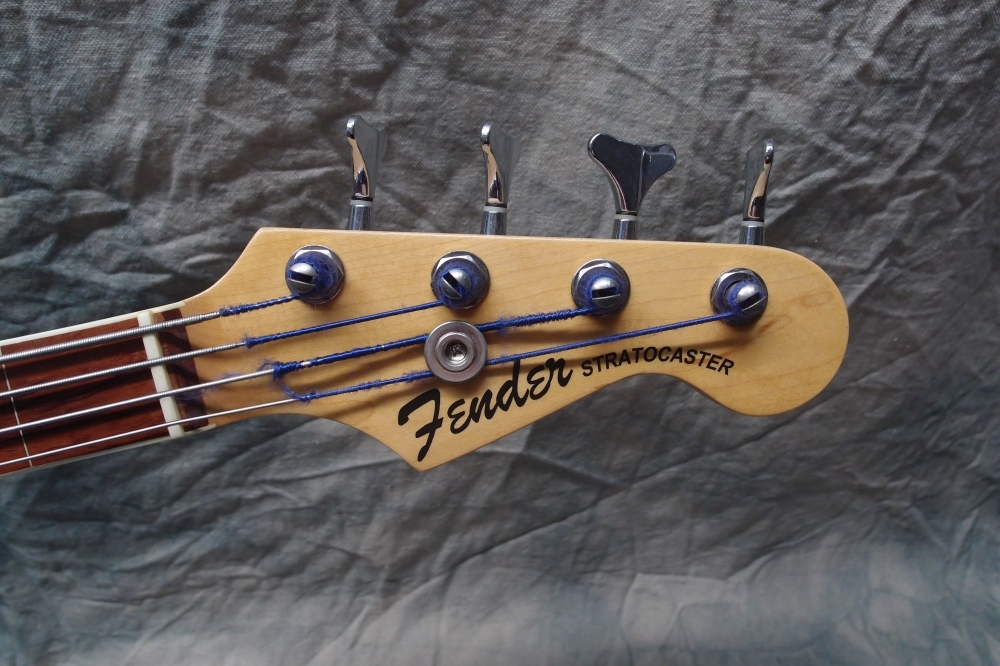Fender Jazzmaster Bass 1
Fender Jazzmaster Bass 2
Fender Jazzmaster Bass 3
Fender Stratocaster Bass 1
Fender Stratocaster Fretless Bass
Fender Stratocaster Bass VI
Fender Stratocaster Bass IV
Fender Stratocaster Bass 2
Fender Stratocaster Micro Bass 1
Fender Stratocaster Micro Bass 2
Fender Stratocaster 12-string Guitar
Fender Stratocaster Uke Bass
Fender Telecaster Bass
SX Precision Bass
As everyone should know, the Stratocaster guitar is actually the guitar version of the Precision Bass, which came first. The big innovation on both was the extended upper horn, a necessity on a long-necked bass for balance and to bring the low frets within reach when the instrument is hanging on a strap. Not strictly needed on a guitar, but looks great, and back in the 1950s nothing had ever been seen like it. It was an instant hit.
More: Fender Projects ...
This started as a Squier Jaguar body with a Mighty Mite neck. Stock pickups ( which are pretty decent ) with cream-colored covers and upgraded electronics. I used a MusicMan bridge to evoke the round Jazzmaster tailpiece, and likewise cream Strat knobs. I think it is a vast improvement over the Jaguar it started out as. The Cowbell inherited some of the Jaguar electronics.
More: Jazzmaster Bass 1 ...
This started as a stock Squier Jaguar bass body. This 32" conversion neck was my first bass neck build. Stock pickups ( which are pretty decent ) with cream-colored covers and upgraded electronics. I used a MusicMan bridge to evoke the round Jazzmaster tailpiece, and likewise cream Strat knobs. I think it is a vast improvement over the Jaguar it started out as. The Cowbell inherited some of the Jaguar electronics.
More: Jazzmaster Bass 2 ...
Hollow plywood body with Mighty Mite 34" neck. Graphtech Ghost piezo saddles with a backup soundhole-mounted magnetic pickup, active electronics.
More: Jazzmaster Bass 3 ...
This is my reference for guitar setups - a Japanese "E-series" Squier Stratocaster from the early '80s. This was an era when Fender-America was not doing their best work, while the Japanese models were superb.
More: Squier '62 Stratocaster ...
Fender Stratocaster 12-string Guitar
Extended headstock with all tuners interleaved on one side. Strip tuners gave tight spacing, but required very precise drilling. EBay body. Home Depot neck.
More: Stratocaster 12-String Guitar ...
This body was purchased on eBay from a parted-out guitar. Might have been a Squier, I don't remember. It was in pretty good shape, and I gave it a good polishing. The neck is hand-made, one of my first. The back is hand-picked Home Depot maple, the fretboard is pre-slotted rosewood from StewMac, I hadn't yet worked out how to make my own. If you cut the first two frets off a 34" fretboard, you end up with a 30" scale. That's about the limit with a pre-slotted fretboard though, as you start to run out of frets at the other end. The dots are 1/4" pearl from StewMac, expensive. The frets are probably pre-cut Fender.
More: Stratocaster Bass 1 ...
This Strat bass is another of my early projects, an evolution of the first one. It uses basically the same neck, but mounted in the stock guitar neck pocket. This moves the bridge position adjacent to the old tremolo hole, but the expansive Mustang bridge plate covers it nicely. The pickguard looks stock, but is actually custom-made to cover the six stock bridge screw holes. If you can't get a Mustang bridge ( and you can't any more, ) you could extend the pickguard to cover all the guitar holes, or use a stock pickguard and just make a small bridge-sized cover. Or just leave the tremolo hole and keep your stash in it.
More: Stratocaster Bass 2 ...
Uses the bottom four strings of a Bass VI set to get a low enough total string tension for the Strat tremolo to work.
More: Stratocaster Bass IV ...
The Fender Bass VI was a bass for guitarists. It was basically a Jazzmaster body with a 30" short-scale bass neck and six mid-weight strings tuned EADGBE one octave below a guitar, or the same as a bass. The string spacing is such that it can only be played with a pick. You can look up the rest of the details. Danelectro actually invented the Bass VI, they were always willing to try new things while Fender and Gibson were just determined to deepen the rut they were in. Rickenbacker's rut is so deep they can't even see out of it.
More: Stratocaster Bass VI ...
This fretless sounds really cool, and is super-easy to play, as you no longer have to stretch your hand unnaturally just to make ordinary patterns. It is set up with flats I found in the junk box. Can anyone tell me what kind of strings have blue thread leaders? The intonation fell right in, which is surprising considering the bridge was previously set up for 25.5" guitar strings. ( Actually, how important is intonation on a fretless anyway? )
More: Stratocaster Fretless Bass ...





